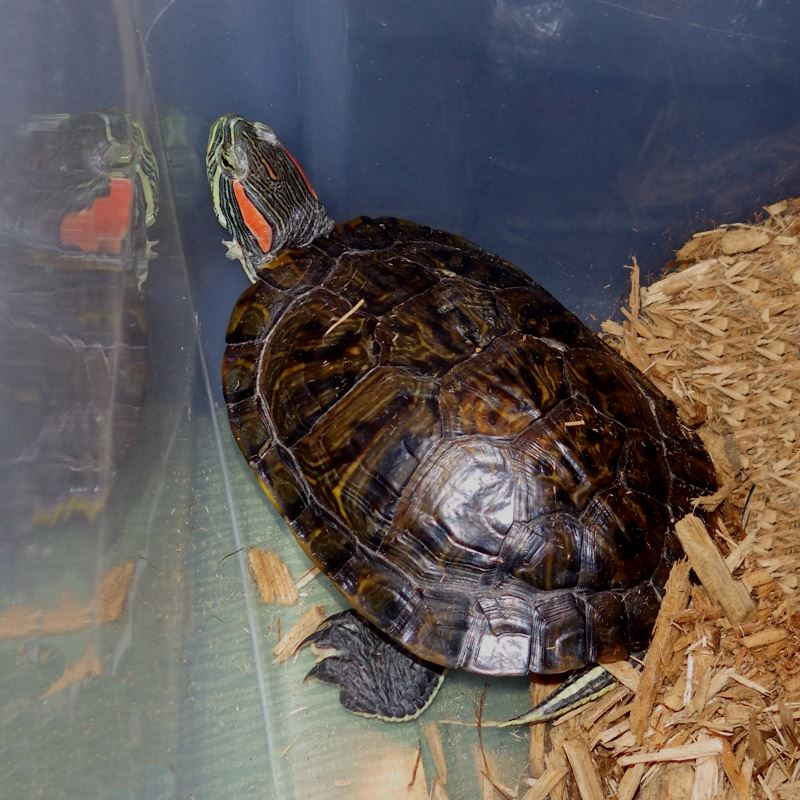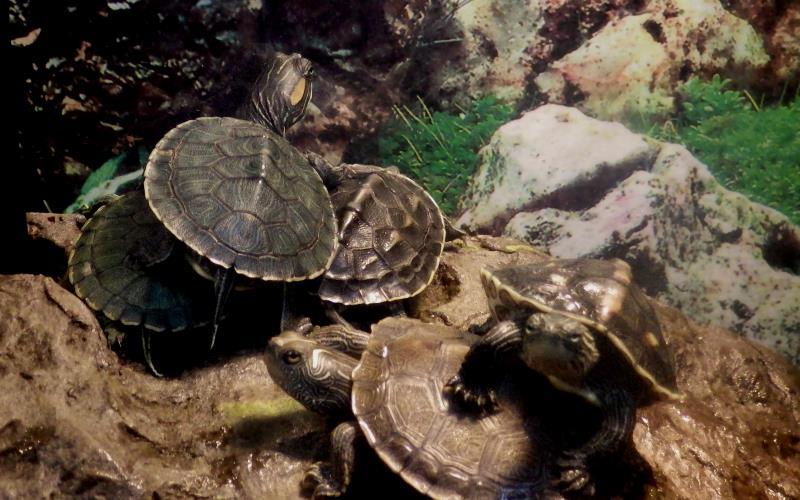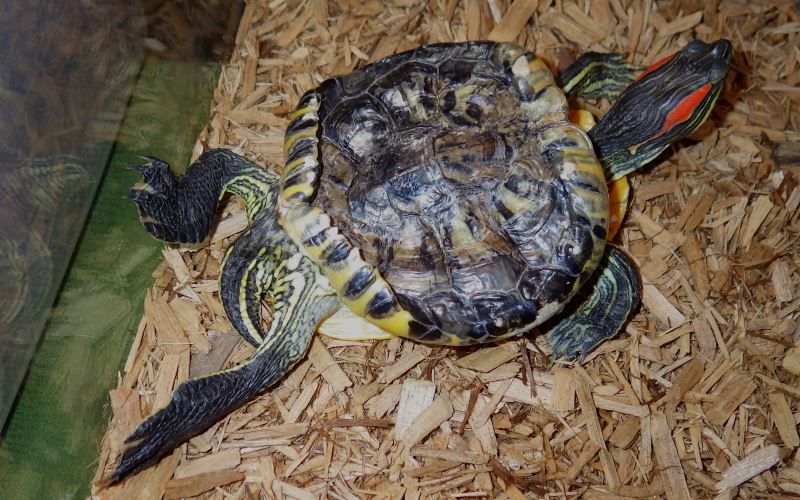Pond sliders have three subspecies. Red-eared sliders are the most common in the pet trade but the other two, the yellow-bellied slider and the Cumberland slider are also fairly common.

Adult red-eared slider (Trachemys scripta elegans) offered for adaptation at a Toronto reptile expo.
Red-eared sliders are often sold as tiny hatchlings without any indication of the animal’s adult size, and the buyer and the turtle are both lucky if any information concerning their care is provided. I must admit that as a child I could not resist the cuteness of a baby read-eared slider and I got one, but later it died probably for the lack of UVB light and adequate amount of calcium in its diet — I did not know better.

Assorted baby turtles offered for sale in a pet store. The green ones top left are red-eared sliders.
People tend to impulse buy these cute little creatures believing that they will stay small.
With proper care, that includes a fairly large swimming space, as well as some land with basking and UVB lights, pond sliders can make good pets. But considering the amount of water they need to swim in, they are best suited for outdoor, or in colder climates indoor ponds or similar setups. A glass aquarium that is over a 120 gallons will also do, but anyone considering a slider turtle as a pet should give some though to the space requirement for such a tank.
Pond sliders are omnivorous, but juveniles do prefer more high protein food. If given a choice even adults will eat food high in protein but feeding them exclusively a high-protein diet can be harmful, and shorten the life span of the turtle as well as cause various development problems such as shell pyramiding in younger animals that are still growing.

This red-eared slider was living in a bucket for years when it was finally rescued by a reptile rescue organization. A shining example why one should not get a pet when one has no idea what the animal’s needs are. Didn’t its former owner think that something was wrong with this turtle when its shell started to develop into this shape?
Without proper knowledge even the pets of well-meaning owners who do try to take care of them, just do it wrong out of sheer ignorance, can wind up as animal abuse cases.

This turtle was offered for free by a reptile rescue organization if someone would just offer it a good home at a Toronto reptile expo.
Further Readings:
Red-eared slider on Wikipedia.
How to Care for a Red Eared Slider Turtle.
Tortoise Trust Web – Red-Eared Slider Care.
Care Sheet – Red Ear Slider.
BioKIDS – Kids’ Inquiry of Diverse Species, Trachemys scripta, pond slider: INFORMATION.
DO I WANT TO OWN ONE?
Reptile Rescue Organizations in My Area
GNP Reptile Rescue
Little RES Q



2 Comments
Leave a reply →